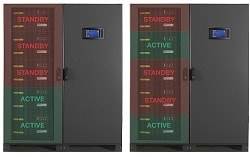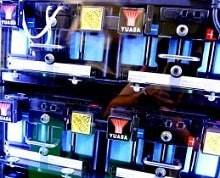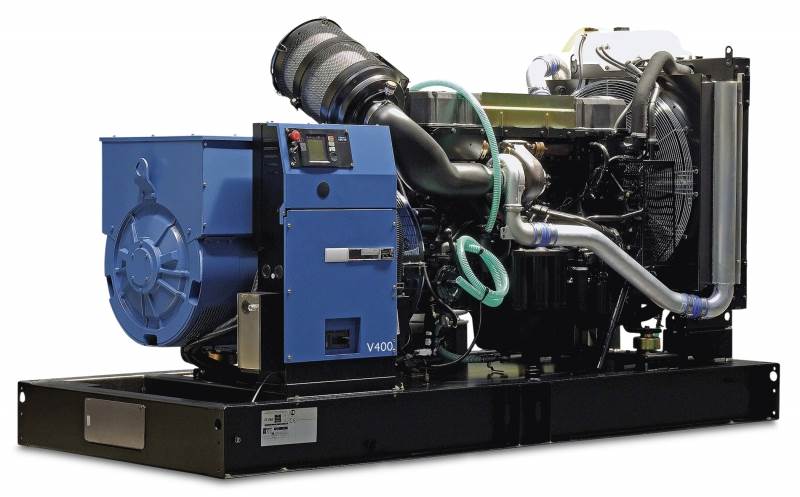- Contact 0870 350 7767
- |
- Advertise
Understanding your UPS battery’s amp-hour rating
 News and PR from Kohler Uninterruptible Power - Published 14 May 2018
If you’re specifying a UPS system, then it’s absolutely essential that you truly understand its battery autonomy; for how long will it support the load if the AC supplies fail?
News and PR from Kohler Uninterruptible Power - Published 14 May 2018
If you’re specifying a UPS system, then it’s absolutely essential that you truly understand its battery autonomy; for how long will it support the load if the AC supplies fail?But itÂ’s a little more complicated than that. In reality, a VRLA lead-acid batteryÂ’s Ah rating isnÂ’t fixed, but depends partially on the rate at which itÂ’s discharged. This is managed by labelling batteries with ‘CÂ’ ratings; these relate their Ah capacity to their rate of discharge. For example, if our 30 Ah system was C20 rated, this would mean that it could provide its 30 Ah capacity while being completely discharged over a 20-hour period. ‘Completely dischargedÂ’ means that every cellÂ’s output voltage is reduced to 1.75 V. Discharging cells beyond this will adversely affect their capacity and useful working life.
Testing is performed by subjecting the battery to a load size that has been calculated to completely discharge it over the 20-hour period. The total Ah output over this period is recorded, and used to specify the batteryÂ’s C20 rating.
However, you will find that if you attempt to discharge our battery at a significantly faster rate – say 10 hours instead of 20 hours – its Ah rating will be reduced. This could amount to something like a 10% reduction, to 27 Ah for example. This loss of capacity arising from faster discharge is caused by heat. The faster a battery is discharged, the heavier the current and the greater the heat produced across the battery’s internal resistance. The battery energy consumed by this heating effect is denied to the load, so its useful or available capacity is reduced accordingly.
Although the above examples have used time periods measured in hours for simplicity of explanation, the reality is that a typical UPS battery system, because of its large load size, will have an autonomy time measured in minutes rather than hours. Nevertheless, the argument informs at least one key question you should be asking when purchasing a battery, or possibly a UPS system if battery capacity in Ah is being quoted: What discharge rate applies to the Ah specification being provided?
Read full article here - http://www.upspower.co.uk/understanding-ups-batterys-amp-hour-rating/

 We should also remember that this is just one aspect of a batteryÂ’s capacity to support the load.
We should also remember that this is just one aspect of a batteryÂ’s capacity to support the load.

Other announcements from Kohler Uninterruptible Power
-
Keeping UPS availability high
When data centre operators invest in UPS systems, it’s for one purpose only; to maximise power availability for their facility’s ICT equipment.
14 May 2018
-
Future trends for UPSs
What does the future hold for UPS technologies and systems? We asked Alan Luscombe, Director at UPSL, for his views, as summarised below.
02 Nov 2017
-
UPS, heal thyself
UPSs exist solely to deliver clean, uninterrupted power to their critical load – but their ability to do so is entirely bounded by their resilience to failure of their own components or subsystems.
31 Aug 2017
-
Maintaining UPS efficiency when the load size diminishes
Modular UPS technology, as implemented in systems such as UPSL’s PowerWAVE 9500DPA, is now being exploited in a smart solution that maintains UPS efficiency even when the UPS load is severely reduced.
30 Aug 2017
-
Is it time to consider Lithium-ion batteries?
Why hasn’t the industry adopted lithium-ion solutions with greater enthusiasm, and is this likely to change? We can answer these by looking at factors relating to both lead-acid and lithium-ion bat.
30 Aug 2017
-
How UPS efficiency can contribute to data centre PUE
Improving UPS efficiency can help to better data centre PUE performance. The article discusses the options for this available to UPS operators who invest in the right, transformerless technology UPSs.
30 Aug 2017
-
The Internet of Things, data centres, and UPSs
The Internet of Things (IoT) is gaining traction at an accelerating pace; Gartner has predicted 26 billion connected devices by 2020, while others are calling even higher numbers.
30 Aug 2017
-
Director's Blog: So just what exactly is a UPS?
This blog written by Alan Luscombe, UPS Ltd Director, explains what a UPS is, as well as putting the various risks averted by UPS systems into perspective.
03 Aug 2015
-
Choosing a generator for data centre power protection
UPS generators are no longer just a backup plan. Today, they are considered a vital component of a company’s power protection policy, as sizing UPS batteries for protracted power blackouts is simply uneconomic and impractical. In choosing a generator for a data centre or other critical IT load application, a number of factors must be considered. These include the generator’s key components, environmental issues and the qualifications of the suppliers as well as compatibility with the UPS to be supported. In this article, Alan Luscombe, director at Uninterruptible Power Supplies Ltd., a Kohler company, discusses how generators work with UPSs, and the factors you must consider when choosing a generator as part of your power protection policy.
23 Jul 2015







